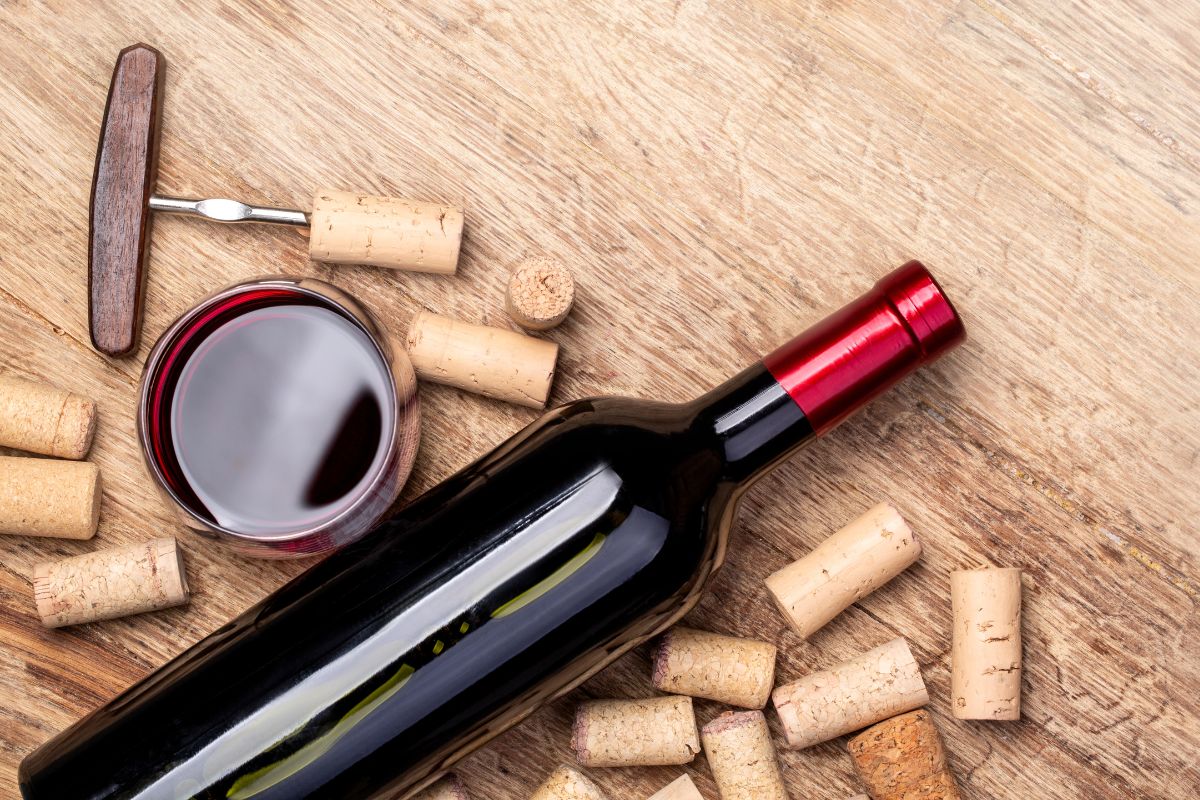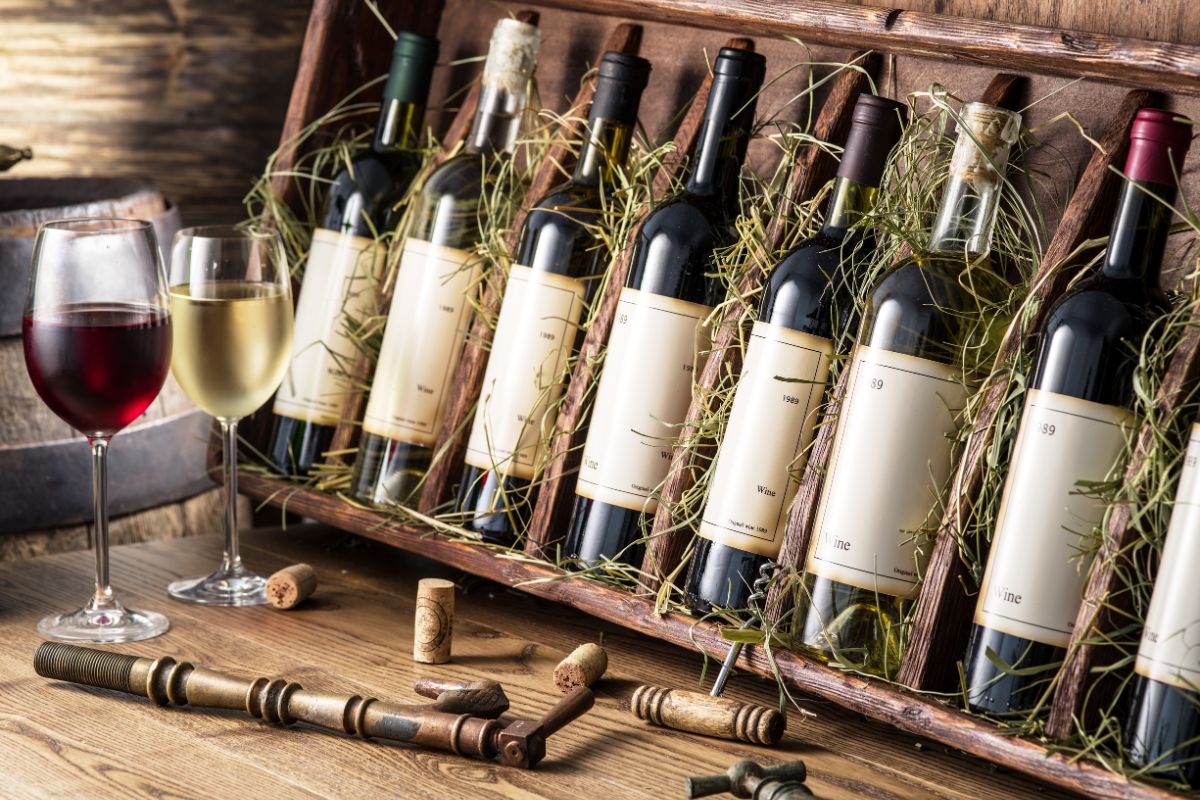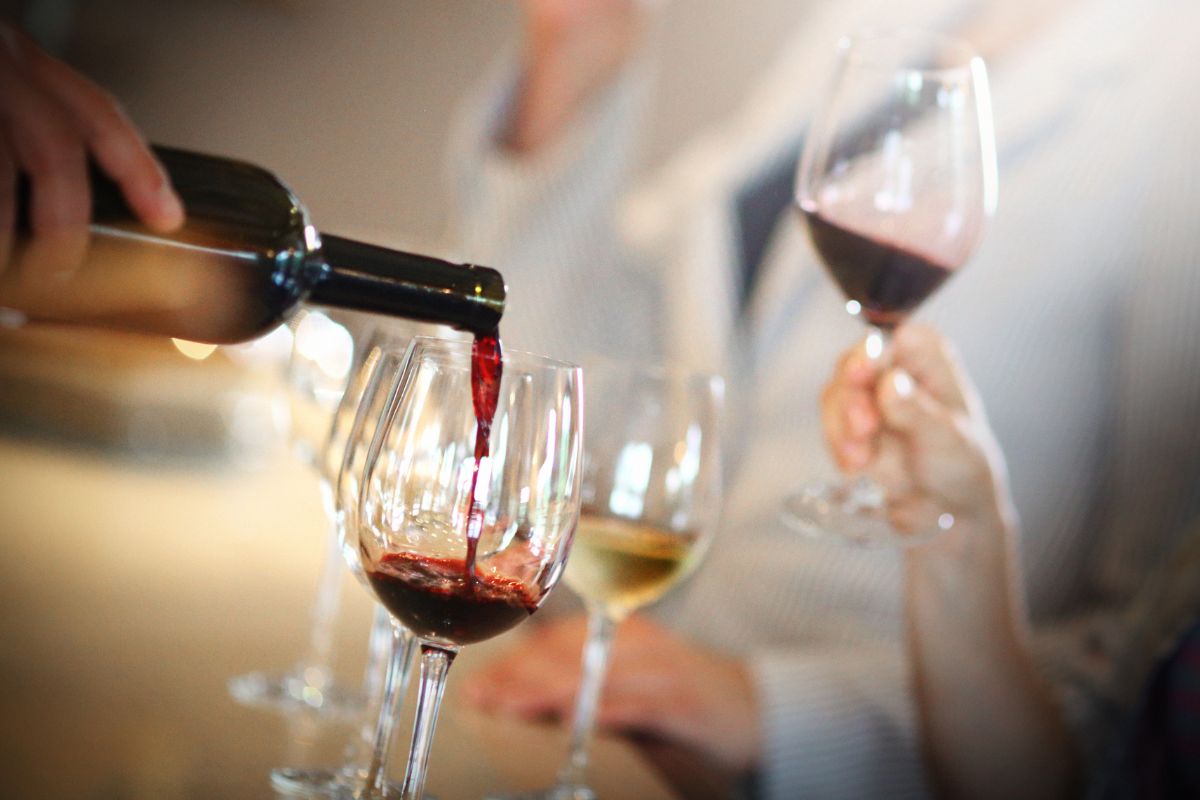Bordeaux, the renowned wine region nestled in the southwest of France, is often considered the epitome of elegance and sophistication when it comes to the world of wine.

With its rich history, diverse environment and terrain, and exceptional winemaking traditions, Bordeaux has captivated the hearts and palates of wine enthusiasts for centuries.
Whether you’re a novice wine lover or a seasoned connoisseur, this complete guide to Bordeaux will provide you with the essential knowledge to navigate this fascinating wine region.
Bordeaux: An Overview
Bordeaux is a region in southwestern France that has long had a reputation for its iconic wines.
Home to some of the oldest and most celebrated wine estates in the world, this picturesque region boasts a unique geographical advantage, with the Gironde Estuary dividing the region into two distinct areas: the Left Bank and the Right Bank.
The region encompasses multiple sub-regions, known as “appellations,” each offering its own distinct character, grape varieties, and winemaking practices.
Bordeaux wines are typically a blend of grape varieties, with the classic red wines made from Cabernet Sauvignon, Merlot, and Cabernet Franc, while the whites often feature Sauvignon Blanc and Sémillon.
Cabernet Sauvignon
Cabernet Sauvignon is one of the most popular and widely-recognized varieties of Bordeaux.
It’s best known for its intense tannins, intense aromas of black currant, and subtle notes of vanilla and spice.
Merlot
This variety is cultivated on both the Left Bank and Right Bank and is often blended with Cabernet Sauvignon to create a more balanced wine.
Merlot has a softer tannin structure than Cabernet Sauvignon and adds complexity to the blend, with aromas of blackberry and cassis.
Sauvignon Blanc
This variety is the main white grape of Bordeaux, widely cultivated on both the Left Bank and Right Bank.
Sauvignon Blanc produces crisp wines with intense aromas of citrus, green apple, and passion fruit.
Sémillon
Another white variety of Bordeaux, Sémillon is mainly cultivated on the Right Bank.
It produces full-bodied wines with aromas of honey, pear, and apricot.
Bordeaux Appellations
As we mentioned, Bordeaux is divided into multiple appellations, each of which has its own unique characteristics and “terroir” – these are the environmental factors that have an impact on a crop.
The diverse terrain and different environments of Bordeaux have a huge impact on the characteristics of the wine.
The Left Bank, with gravelly soils, is known for producing structured and age-worthy wines, while the Right Bank, with its clay and limestone soils, offers softer and more approachable styles.
The most renowned appellations are:
Médoc
Known for its prestigious châteaux and classified growths, Médoc produces powerful, age-worthy red wines, and is largely dominated by Cabernet Sauvignon, making this one of the most popular options in the region.
Saint-Émilion
This appellation is recognized for its Merlot-driven wines, which tend to be more approachable and velvety in texture.
Saint-Émilion wines often exhibit ripe red fruit flavors and a touch of spiciness.
Pessac-Léognan
Situated within the Graves region, Pessac-Léognan excels in both red and white wines.
The reds display refined tannins, while the whites offer a harmonious blend of citrus and tropical fruit notes.
Sauternes
Famous for its luscious sweet wines, Sauternes produces botrytized wines with flavors of honey, apricot, and exotic spices.
These dessert wines are a true indulgence.
Bordeaux Wine Classifications

Wine classifications are a key factor in determining the quality of a Bordeaux wine.
The most famous classification is the 1855 Classification, which ranked the top nine châteaux of the Médoc region. This classification continues to be updated today and remains an important guide for evaluating wines from Bordeaux.
In addition to this classification, several other classifications give recognition to quality producers in the region.
Cru Bourgeois Classification
The Cru Bourgeois classification is a ranking of red wines from the Médoc and Haut-Médoc appellations.
These wines must meet stringent quality requirements to qualify.
Premier Grand Cru Classé (A) Classification
This classification is reserved for the most prestigious red wines from the five major appellations of Bordeaux: St.-Émilion, Pomerol, Margaux, Pauillac, and St.-Julien.
Cru Artisan Classification
This classification is for small-scale winemakers who make wines with the same quality as the larger producers.
The wines must meet certain criteria in order to qualify, and this includes having a minimum of five vintages in production.
How To Choose The Perfect Bordeaux
When choosing a Bordeaux wine, there are several factors to consider. These include:
Red Or White
One of the first decisions is whether to choose a red or white wine.
Red Bordeaux wines tend to be more age-worthy and complex, while white Bordeaux wines are typically crisp and light.
Classification
The classification of the wine will also provide a good indication of quality.
For example, wines from the Cru Bourgeois classification are known for their value, while Premier Grand Cru Classé (A) wines are some of the finest in Bordeaux.
Consider The Vintage
The vintage of a Bordeaux wine refers to the year in which the grapes were harvested. Bordeaux is known for its vintage variations, with some years producing exceptional wines.
Keep in mind that young Bordeaux wines may require some aging to reach their full potential, while older vintages are often ready to be enjoyed.
Researching the vintage and seeking expert advice can help you choose the right wine for your desired drinking timeline.
Seek Knowledgeable Sources
When exploring Bordeaux wines, it is beneficial to seek guidance from wine experts, sommeliers, or reputable wine merchants.
They can provide valuable insights, recommend specific producers or vintages, and assist you in navigating the vast array of options available.
Embrace Wine Tastings
Attending wine tastings and events focused on Bordeaux wines can be an enlightening experience; these gatherings offer an opportunity to sample different wines side by side, understand their nuances, and develop your palate.
Exploring Bordeaux through tastings helps refine your preferences and enhances your ability to select the best wines.
Do Your Homework
While classifications and appellations can help navigate Bordeaux wines, it is also important to do your own research to discover what you like.
Look for reviews from trusted wine critics and explore the history of the winery; staying up to date on current releases can help you find a great bottle before it becomes highly sought after.
Explore Different Regions
As mentioned, the appellation of the wine will indicate its style, price, and quality. Look for wines from the most renowned appellations such as Médoc, Pomer ol, and Saint-Émilion.
Exploring different appellations or producers can help you discover new and exciting wines and broaden your understanding of the region.
Don’t hesitate to venture outside the more well-known areas, as there are many hidden gems waiting to be discovered.
Understand The Labels
When selecting a Bordeaux wine, it is essential to understand the various labels and terms.
Knowing the difference between appellations, classifications, and vintages can help you make an informed decision.
Additionally, becoming familiar with specific producers and their portfolios can lead to great discoveries.
Research Producers
Taking time to research different producers is also beneficial. Look for producers with a long and consistent track record of quality.
Also, seek out those who are making a name for themselves in the industry.
As you research producers, make sure to look at their pricing.
While some of the most sought-after wines will come with an expensive price tag, you may be able to find excellent wines that are more affordable.
Invest In Quality
When it comes to Bordeaux wines, quality is key. While there are many affordable options, investing in bottles from renowned producers and top appellations can be a worthwhile expenditure.
Investing in quality wines ensures that you will get the best flavor and experience with each sip.
What Are The Benefits Of Bordeaux Wine?

Bordeaux wine has many benefits that can be enjoyed by all types of wine drinkers, and these include:
Savoring Tradition
Bordeaux is renowned for its tradition and history that dates back centuries.
The most prestigious appellations have been producing world-class wines since the Middle Ages, and each vintage reflects a combination of time-honored techniques and modern innovation.
Enjoying a bottle of Bordeaux wine is an experience unlike any other – you are taking a step back in time with every sip.
Unique Flavors
As you explore the different appellations, you will find a wide range of flavors and styles.
This variety of taste profiles allows for a unique and exciting experience with each sip; Bordeaux includes flavors such as dark fruits, herbs, leather, tobacco, spices, and more.
High Quality
Bordeaux is renowned for producing some of the world’s highest-quality wines. With stringent regulations in place, all Bordeaux wines must meet certain standards before they can be sold.
This ensures that each bottle offers a reliable level of quality and consistency.
Versatility
Bordeaux wines are incredibly versatile and can be enjoyed on their own or paired with food. They range from simple everyday table wines to complex bottles that can stand up to the most exquisite dishes.
Regardless of your preferences, you can find a Bordeaux wine that is perfect for any occasion.
How Is Wine Made?
Winemaking is a complex art that involves several distinct stages, and these are as follows:
Harvesting
The first step in the winemaking process is harvesting. Grapes are picked at their peak ripeness and carefully transported to the winery for processing.
Crushing
After arriving at the winery, the grapes are placed into a crusher where they are broken down before being transferred into fermentation tanks.
Here, they will begin to undergo the transformation from grape juice to wine.
Fermentation
The next step in the winemaking process is fermentation.
Over the course of several weeks, the grape juice will be transformed into alcohol as yeast consumes the natural sugars, and will eventually become wine.
Aging
The final step in the winemaking process is aging. During this stage, the wine is left to mature in oak barrels for am extended period of time to enhance its flavor and complexity.
Once it has reached its peak, the wine can be bottled and enjoyed and is now ready to be shipped around the world.
In Bordeaux, there are specific regulations that dictate the aging requirements for each appellation, and these must be adhered to before the wines can be released.
This ensures that each bottle of Bordeaux wine is of the highest quality.
What Are The Main Components Of Wine?
The main components of wine are alcohol, acids, tannins, and sugars.
Alcohol
As you would expect, alcohol is the main component of wine.
This is created during the fermentation process as yeast consumes the sugar in the grape juice and converts it into ethanol.
Acids
Acids are another important part of wine, and they help to give the beverage its characteristic tart flavor.
They also act as preservatives, helping to keep the wine from spoiling over time. The two most common acids found in wine are tartaric and malic.
Tannins
Tannins are compounds that come from the skins, seeds, and stems of grapes, and these help to give the wine its tannic flavor.
They can also act as preservatives, helping to keep the wine from spoiling over time.
Sugars
The sugars in wine are the result of the grape juice’s natural fermentation process.
They help to balance out the tart flavors from the acids and tannins and also give the wine its characteristic sweetness, ensuring that it is enjoyable to drink.
By understanding the different components of wine, you can gain a better appreciation for the complexity and flavor of every bottle.
This knowledge will help you to choose the perfect Bordeaux for your next meal or occasion.
Final Thoughts
Bordeaux offers an incredible variety of wines, from simple everyday table wines to complex bottles fit for the most exquisite dishes.
With its stringent regulations in place, you can be sure that every bottle of Bordeaux wine is of the highest quality.
By understanding the components of wine and how it is made, you can gain a better appreciation for each bottle and make more informed decisions when choosing a Bordeaux, and ensure that you have the perfect bottle for any occasion.
- Why Does Wine Taste Better With Age? - June 14, 2023
- What Does It Mean When A Bottle Of Wine Is Corked? - June 14, 2023
- Wine Fridge Vs Wine Cellar – Which One Should You Choose? - June 14, 2023
